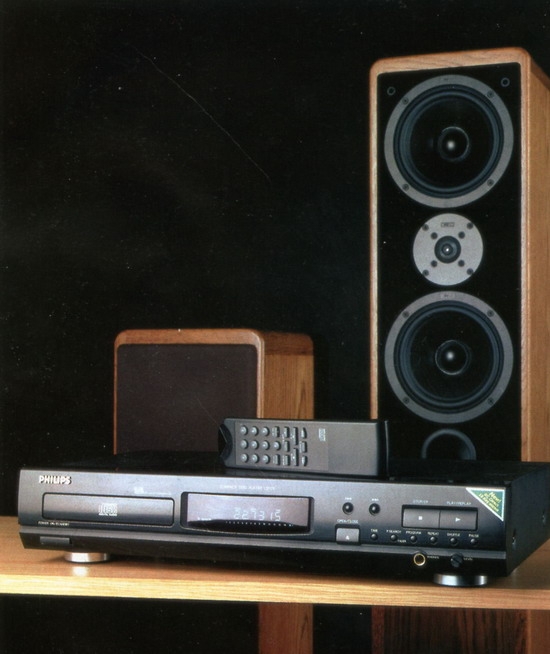Philips CD721 CD-player
The models of the new 700-series have recently sprung up like from a horn of plenty. The CD721 takes the middle position in the new range of the company: the top model CD751 participated in our big test, and the simplest CD711 differs by the lack of an adjustable headphone output and remote control feature. The CD721 differs from the CD751 purely externally by the absence of ten buttons with digits for direct selection on the front panel. The internal differences affect the system of digital-to-analog converter, in which instead of the already traditional for Philips turntables bitstream system was used its simplified version bitcheck. What are the losses of such a change? From the comparison of the declared technical specifications we found a difference in three parameters. But the increase in the frequency response flatness from 20Hz to 20kHz from 0.1 to 0.3dB can be ignored. The main loss is observed in the signal-to-noise ratio, which is 10 dB less with the CD721, resulting in 90 dB. However, their dynamic range is the same, and the increase in noise turned out to be absolutely imperceptible on most modern music programs. But let's return to the controls. The main and auxiliary functions are presented almost in full, and the control itself is very ergonomic. From the auxiliary functions, only the mode of editing the playback order when recording to the cassette is missing. But this is not the most important thing in this case. But there is a much more necessary Peak Search which can be used both on all records of the disk and only on those included in the program. The absence of buttons for direct start by number on the unit itself is fully compensated by such a possibility from the remote control. Here, however, it should be noted that this function does not work when compiling a program. In addition, you can use the remote control to enable fragmentary playback of the beginning of each track for ten seconds and to regulate the signal level on the line output in steps. Of the auxiliary functions that are directly displayed on the indicator, you should definitely pay attention to the four modes of time counting: the current time from the beginning of the track or disc and the remaining time to the end of the track or disc. In the case of program playback, the corresponding program time is indicated instead of the disc. The music calendar, which on the CD721 is in line form, displays 15 fragments and also has a symbol for exceeding that number. Although this number is not as large as in some other models, but in the vast majority of cases, especially for classical or jazz, it is quite sufficient. In this turntable, messages appear on the display during operation to inform you of the correct operation or to tell you how to correct a control error you have made. At the same time, if the message is more than six letters or consists of several words, it will be represented by a running line. This is possible when, for example, you have loaded a non-sound disc or selected a track that does not exist on the disc. The message in these cases will be respectively "no audio disc" or "wrong track". And finally, more about the sound quality. The Philips CD721 player showed it during the listening tests with musical fragments of different genres very good, characterized by a special neutrality. And given the claimed price, it seems especially tempting.




